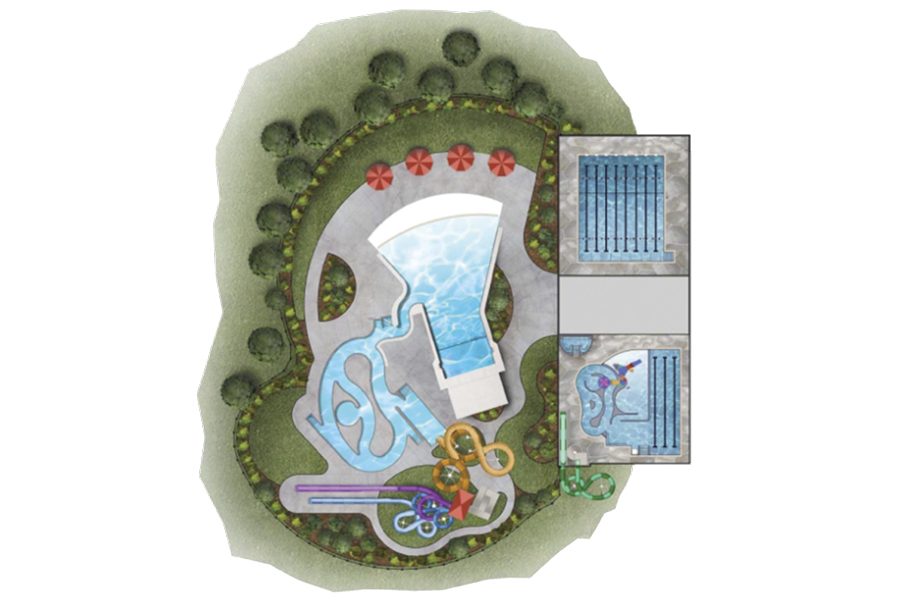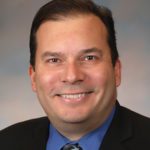
Home » Pasco aquatics center has target opening date
Pasco aquatics center has target opening date

October 14, 2022
January 2023 and October 2024.
Those are the dates to keep in mind as Pasco moves to build a $40 million, voter-approved aquatics center and possible community center.
January 2023 is when a two-tenths of a percent sales tax kicks in to pay for the center. Pasco’s sales tax rate rises to 8.9 cents per dollar from 8.7 cents. The increase adds 20 cents to a $100 purchase.
October 2024 is when the center should be ready for swimmers.
There is a lot of work to be done in the interim, including selecting a site, working out a bond package, getting it approved by the state, designing the center, hiring a contractor and more.
New hire

The Pasco Public Facilities District, the entity behind the aquatics center, took a big step forward in August by hiring former
Pasco Mayor Matt Watkins to shepherd the project through to the ribbon-cutting ceremonies envisioned for two years from now.
“It’s an ambitious goal,” said Watkins, who is working under a $10,000-a-month contract and treating the aquatics center as his full-time job.
The facilities district is a quasi-independent entity governed by an appointed board that operates in partnership with the city. Pasco has supported the effort with loans and by offering Watkins a cubicle in the engineering department at City Hall.
Washington law allows facilities districts to ask voters to approve a small sales tax increase – up to 0.2% – to fund public amenities.
By way of background, Tri-City voters have been hostile to public facilities districts. Kennewick voters refused requests from the Kennewick Public Facilities District to upgrade the Three Rivers Convention Center three times.
In 2013, the Tri-Cities Regional Public Facilities District asked voters in all three cities to support a $35 million aquatics center. The request failed, but only because “no” voters in Kennewick and Richland outnumbered “yes” voters in Pasco.
Pasco vowed to press on and lobbied the state Legislature to add “aquatics centers” to the list of projects its own city-level on a facilities district could build.
The request went to voters in April and passed, 4,166 votes to 3,399, or 55% to 45%. Voter turnout was 22.5%.
Watkins, who left the city and his job at Hanford in 2019 to travel, returned from his global wanderings in May, eager to reengage in the community. The aquatics center was a natural fit. He’d supported it as mayor, going back to the 2013 vote.
“I think Pasco is going to become the swimming city,” he said.
When the facilities district pitched the aquatics center to voters this spring, it did not specify a location, though it is understood it will be sited on the fast-growing west side since Pasco’s Memorial Aquatic Park and its 50-meter pool are on West Shoshone Street, closer to the east side.
The Pasco School District confirms it is partnering with the city to put a removable enclosure over Memorial Pool that could extend operations beyond the months sandwiched between Memorial and Labor days. Anna Tensmeyer, spokeswoman for the district, said it is not part of the bond package that will appear before voters on the February ballot.
Where will it go?
Watkins expects the district to finalize a location this fall. The Broadmoor area west of Road 100-Broadmoor Boulevard and an area near Road 68, where an unspecified developer has proposed building the center with private development, are among the candidates.
The project will require six to eight acres. Wherever it lands, the center will serve not only Pasco residents but the Tri-Cities and the region. As a tourist destination, it is expected to inspire private investment in tourism-friendly facilities, like restaurants, hotels and so forth.
But first, Watkins and the board have lots of homework. The facilities district is preparing to take out a loan from the city to cover expenses until sales tax revenue begins coming in.
It must project what the new revenue stream will support. It can’t sell bonds to finance construction until the state Department of Commerce reviews its business plan to ensure the project is financially viable. Watkins said he’s pleased that the facilities district board is interested in the long-term cost to operate the facility.
Mark Morrissette, the chair, is an accountant.
The board expects to hold community meetings to identify the amenities future visitors want – a lazy river, wibits (inflatable water features akin to bouncy castles that float), and more. Watkins wants to convene third-graders to share their aquatic dreams and high schoolers to help determine what is feasible.
The first phase will focus on recreation. A later phase will add a competition pool.
How will it be paid for?
The $40 million budget is the current best estimate of the amount of debt the new sales tax revenue stream will support.
Had the tax been in effect in 2021, it would have generated $4 million for the district, based on that year’s taxable retail sales of just over $2 billion for Pasco, according to the state Department of Revenue.
The district will issue bonds against that revenue stream, which also will cover operational costs.
Estimating future revenue is tricky and relies on several factors, from population growth to economic conditions.
In the short term, sales tax revenue is being driven up by inflation and an influx of new retailers. The shift to online shopping benefits communities such as Pasco by keeping sales taxes at home.
The facilities district finance design and construction by selling municipal bonds, which it will repay over 20 to 25 years, much the way homebuyers repay mortgages over time.
Its income looks healthy, but rising costs cloud the financial picture. Inflation, rising interest rates and supply chain issues could affect what the district can afford to build and to operate.
Challenges aside, Watkins is confident Pasco will get the aquatics center it voted for in 2013 and again in 2022.
“We’re going to be able to build a facility that can compete with anything in the Northwest,” he said.
Real Estate & Construction Local News
KEYWORDS october 2022




